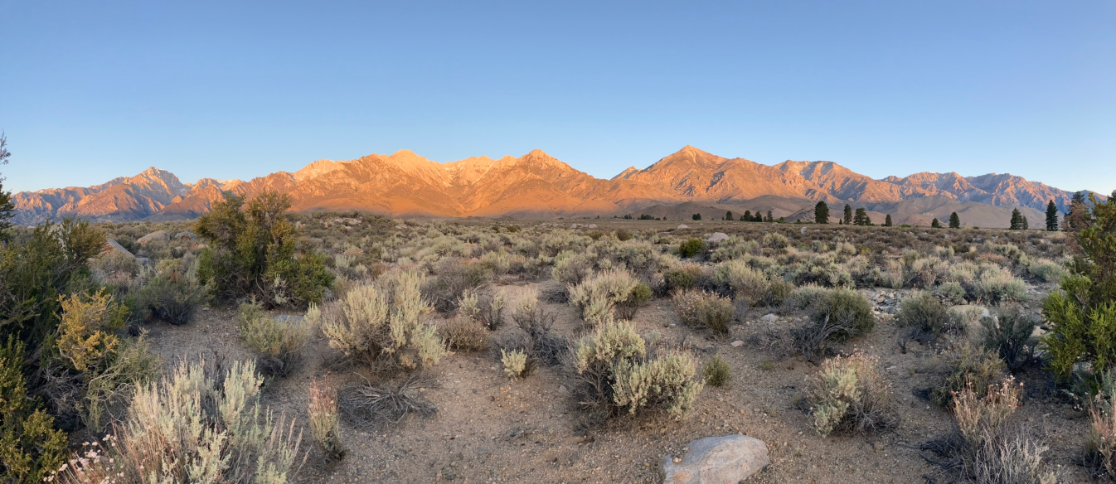Looking back at 2021 continued: Owens Valley, Crescent Dunes, & Species Shifts
/Owen’s Valley, CA. May, 2023
Owens Valley Program
Kelly and Kayla run the Owens River program, and tag-teamed for this update!
In spring 2021, GBBO began a three-year monitoring effort on the Owens River on Southwestern Willow Flycatchers (SWFL), Yellow-billed Cuckoo, Least Bell’s Vireos, and other riparian obligate species. Despite drought conditions, partners from Southern Sierra Research station detected over 100 SWFL territories using call playback. SWFL nests were also monitored for success and parasitism – 11 nests were found on 10 territories. While at least 6 of these were parasitized by Brown-headed Cowbirds, they produced at least 13 fledglings.
We were also joined by Murrelet Halterman, who conducted Yellow-billed Cuckoo surveys in the area. Two cuckoos were detected (one was an incidental), though neither was thought to be territorial. No Bell’s Vireo were recorded during point counts, but we recorded 92 species along 10 point count transects. We look forward to surveying again this spring!
Nest with decoy egg
Willow Flycatcher nest with eggs and nestling
Kayla added: These surveys are no joke and had us crawling through thick willow, wild rose, and stinging nettle all while hoping our rubber boots were tall enough to avoid wet feet. A fun encounter in one of the most densely forested parts of the riparian corridor was coming face to face with a Northern Saw-whet Owl (no photo, but an extremely cool sighting)! One of the interesting things we learned during Willow Flycatcher nest monitoring was to replace any Brown-headed Cowbird eggs found with decoy eggs. One of the reasons for using the decoy egg is to trick the SWFL parents into thinking that nothing has changed. If they notice fewer eggs in the nest, they may think the nest has been parasitized and abandon it. Another fun fact is if a cowbird lays an egg in a nest before a SWFL does, the SWFL may realize there is a foreign egg or object in the nest, prompting them to build another bottom layer to the nest covering the egg. This way, the cowbird egg won’t hatch. Overall, this was an exciting project and the awe-inspiring sunrises and sunsets of the eastern Sierras never got old. Though the days had their challenges, monitoring SWFL nests was extremely rewarding. Plus we had some adorable field dogs to keep us company and made the most of our time working in and around Bishop!
Monitoring Renewable Energy Facilities
GBBO continues to monitor the impacts of renewable energy facilities in on birds and bats by conducting ongoing standardized mortality surveys. In the Altamont Wind Energy Area of California, our teams are working on two sites to perform these surveys using highly trained dogs that locate mortalities by scent. At the Crescent Dunes Solar Facility near Tonopah, human survey teams perform the searches. These efforts are critical in understanding and minimizing any negative effects of renewable energy production on birds and bats.
Crescent Dunes Solar Facility, Tonopah, NV
- John
Species Range Shifts
I think everyone is going to talk about how hot and dry 2021 was. Every year there are seasonal differences, but the ones I saw this year were some of the starkest I’ve ever observed. Rather than gloom and doom the place up, how about a less direct discussion of these changes!
In early 2021, many birders are aware, that the northernmost nesting attempt of LeConte’s Thrasher was documented, rather thoroughly by a few researchers. This nesting effort was ultimately unsuccessful, but suggests several important things. The species has not necessarily been extensively studied, but those who have spent considerable time with them all note that they are not exceptional flyers, and do not disperse particularly far. This nesting site was some 200 miles north of the closest previously known nesting location. For a bird that is not described as a particularly strong flyer, that is a pretty impressive distance for not 1, but 2, birds of opposite sexes to travel and find each other. Jay Sheppard’s recent book, The Biology of a Desert Apparition: LeConte’s Thrasher. It seems likely that these guys are making smaller leaps, finding suitable habitat along the way, and making their way north. If only birding the salt desert were more exciting, we could get some more eyes out there…
Another notable recent bird sighting is a 2nd record for NV. The Barred Owl is expanding south through the Sierra Nevada, and before that, the Cascades, and before that, west through the boreal shield. This pattern suggests we are likely to see more of them in Nevada. While the specific reasons for both of these phenomenon are the grounds of much speculation, it is nonetheless interesting to note we are seeing some species coming south, and some coming north, of their expected ranges. Nevada is a large state that covers a lot of habitat, and as such, we are uniquely situated at the fringes of many species’ ranges. In my mind, this makes Nevada an extremely interesting place to pay attention to the birds, as we see changes in climate such as those observed in the 2021 field season.
-Ned
Barred Owl at Fly Ranch, Ned Bohman






